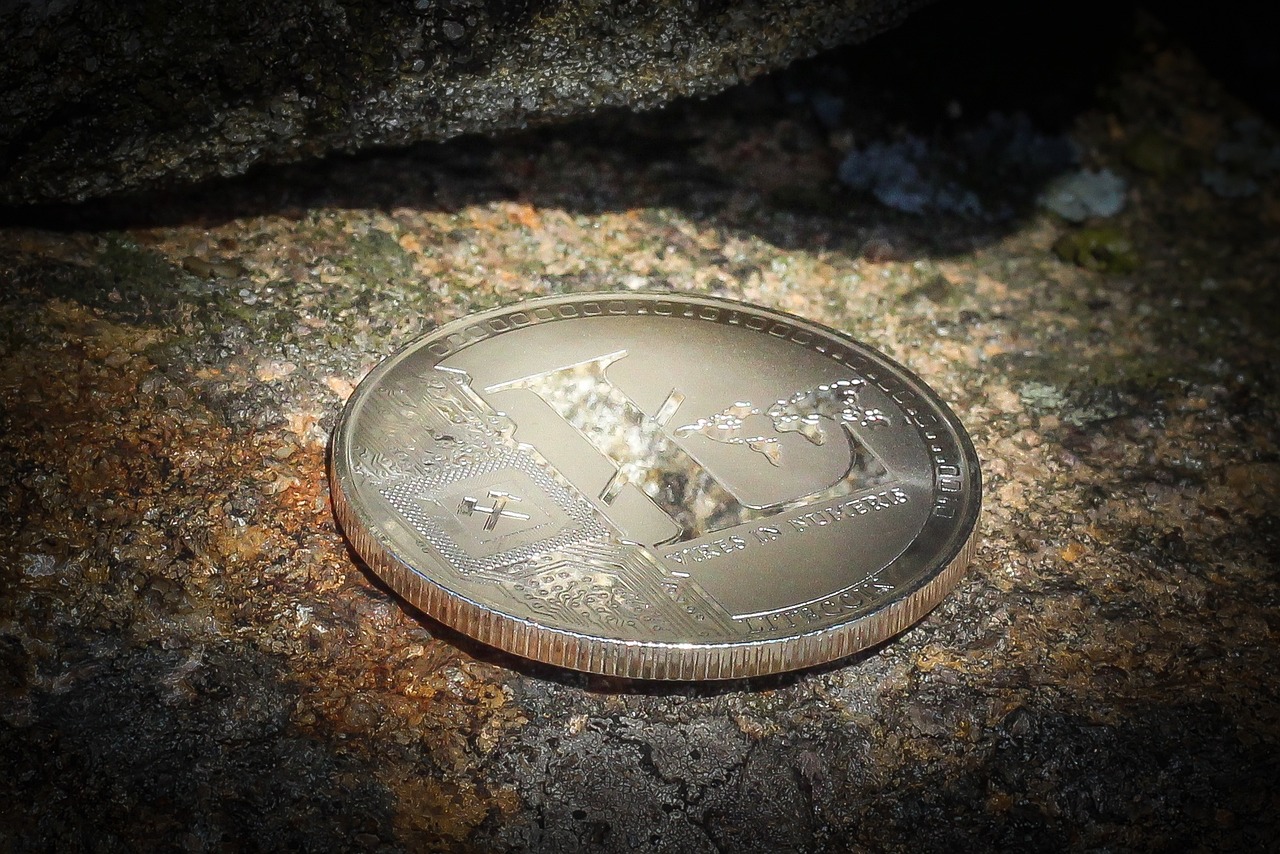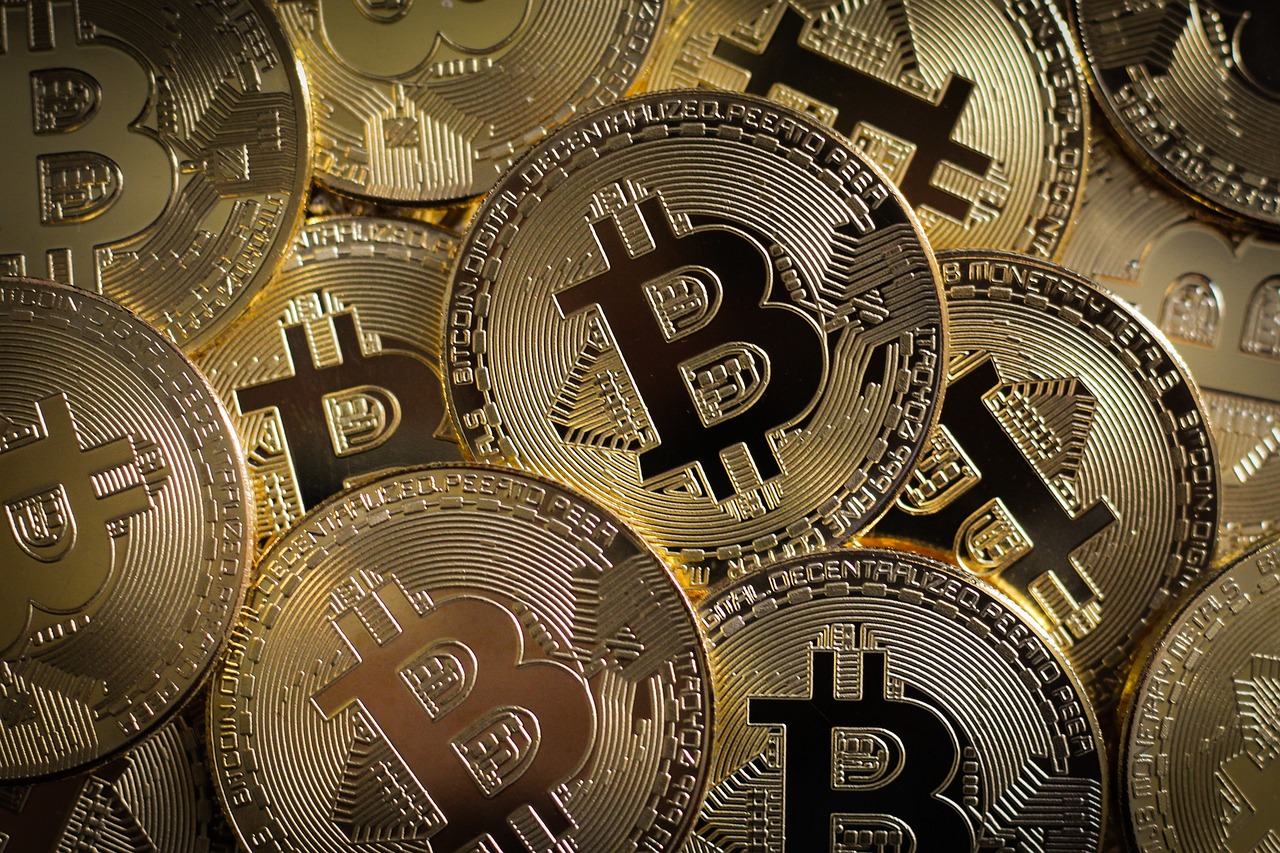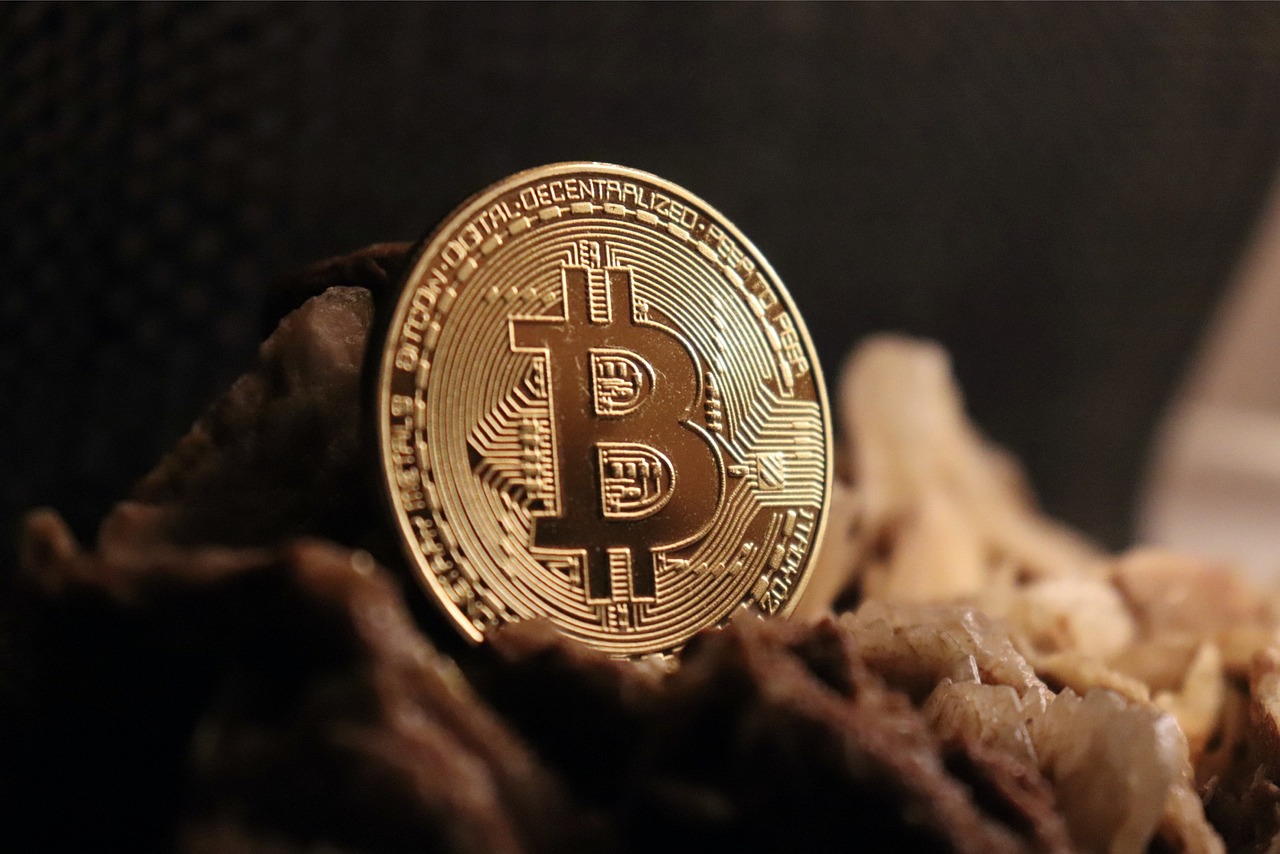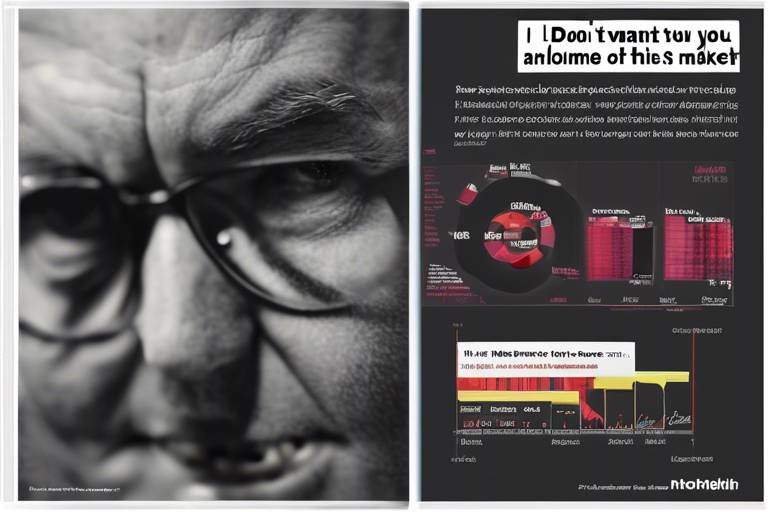Evaluating the Performance of Crypto Tokens Post-Launch
In the ever-evolving world of cryptocurrency, the launch of a new token is often met with a mix of excitement and skepticism. Investors and developers alike are eager to understand how these tokens will perform in the chaotic market that follows their release. is not just about looking at price charts; it's about diving deep into various metrics and factors that influence their journey. This article aims to unravel the complexities of token performance, providing valuable insights that can aid both investors and developers in navigating this unpredictable landscape.
Understanding market trends is crucial for evaluating crypto token performance. The cryptocurrency market is notorious for its volatility, and post-launch, a token's valuation can swing dramatically based on market dynamics. For instance, during a bullish trend, even tokens with minimal utility can see their prices soar, while in a bear market, even the most promising projects can struggle to maintain value. Investor sentiment plays a pivotal role here; a positive news cycle can lead to increased demand, while negative headlines can trigger panic selling. Thus, keeping an eye on broader market trends is essential for anyone looking to assess a token's performance after its launch.
The utility of a token is perhaps its most critical attribute when it comes to long-term performance. Tokens that serve a clear purpose within their ecosystem tend to perform better than those that do not. For example, a token designed for decentralized finance (DeFi) applications may see sustained interest if it provides unique features that enhance user experience or offer real value. Conversely, tokens without a defined use case can quickly fade into obscurity. It's like having a tool without a job; it might look nice, but if it doesn't serve a purpose, it's just taking up space.
Real-world applications of a token can significantly enhance its value and market perception. When a token is integrated into existing systems or used to solve real-world problems, it tends to garner more interest and investment. For instance, tokens that facilitate cross-border transactions or enable smart contracts in various industries often see a positive impact on their performance metrics. Here are some examples of successful tokens that have effectively integrated into real-world applications:
- Chainlink (LINK): Provides reliable tamper-proof data for smart contracts.
- Basic Attention Token (BAT): Enhances digital advertising by rewarding users for their attention.
- VeChain (VET): Offers supply chain solutions, improving transparency and efficiency.
Exploring specific case studies of successful tokens provides insights into how their real-world applications contributed to their post-launch performance. For instance, Chainlink has become a cornerstone in the DeFi space by providing essential data feeds that many projects rely on. Its ability to integrate seamlessly into various blockchain ecosystems has not only boosted its utility but also its market value. Similarly, VeChain's partnerships with major corporations have showcased the tangible benefits of blockchain technology in supply chains, further solidifying its position in the market.
However, it's important to acknowledge the challenges faced by utility tokens. Many tokens struggle with adoption and integration into existing systems. The lack of awareness or understanding of a token's utility can hinder its growth. Additionally, regulatory hurdles and competition from other projects can pose significant obstacles. For example, a token that aims to streamline payment processes might find itself competing with established payment platforms, making it difficult to gain traction in the market. These challenges can have a profound effect on a token's performance after launch, often leading to decreased investor confidence and lower market valuations.
Community engagement is a vital factor in a token's success. A strong, active community can drive interest, enhance visibility, and foster loyalty. When users feel connected to a project, they are more likely to support it through thick and thin. This support can manifest in various ways, such as participating in governance, advocating for the token, and spreading the word to potential investors. A vibrant community can act as a safety net during turbulent times, helping to stabilize a token's value in the face of market fluctuations.
The regulatory landscape significantly affects crypto token performance. Regulations can either bolster investor confidence or create uncertainty, impacting token valuation in the post-launch phase. For instance, tokens that comply with legal standards may attract institutional investment, while those that operate in a gray area may struggle to gain traction. It's essential for developers to stay informed about regulatory changes and adapt their strategies accordingly.
Compliance with regulations can enhance a token's legitimacy and appeal. Tokens that prioritize legal adherence not only protect themselves from potential legal issues but also build trust with their user base. This trust can translate into higher adoption rates and, ultimately, better performance in the market. In a space as volatile as cryptocurrency, having a solid compliance strategy can be the difference between success and failure.
Regulatory changes can create volatility in the crypto market. Sudden shifts in regulations can lead to panic selling or buying, affecting token performance dramatically. For example, when a country announces a ban on crypto trading, tokens operating within that jurisdiction may see their prices plummet. Conversely, positive regulatory news can lead to a surge in interest and investment. It's crucial for investors and developers to stay abreast of these changes and understand their potential impact on token performance.
- What metrics should I look at to evaluate a crypto token's performance? Focus on market trends, token utility, community engagement, and regulatory compliance.
- How can community support impact a token's success? An engaged community can drive interest, loyalty, and user adoption, which are vital for a token's longevity.
- Why is regulatory compliance important for crypto tokens? Compliance enhances legitimacy, builds trust, and can attract institutional investment.

Market Trends and Their Impact
Understanding market trends is crucial for evaluating the performance of crypto tokens post-launch. The cryptocurrency market is notorious for its volatility, and this unpredictability can significantly influence token valuation. Imagine standing on a surfboard, riding the waves; if you don’t understand the tide, you might find yourself tumbling into the water. Similarly, being aware of market trends can help investors and developers navigate the choppy waters of the crypto landscape.
One of the primary factors driving market trends is investor sentiment. When the market is bullish, investors are more likely to pour money into new tokens, driving up their prices and creating a sense of euphoria. Conversely, in a bearish market, fear can lead to panic selling, causing token values to plummet. This emotional rollercoaster can be likened to a game of musical chairs—when the music stops, only those who have a solid understanding of the market can find a seat.
Additionally, external factors such as global economic conditions, technological advancements, and even social media trends can impact market dynamics. For instance, when major financial institutions announce their support for cryptocurrency, it often leads to a surge in interest and investment. Conversely, negative news, such as regulatory crackdowns or security breaches, can create a ripple effect, leading to declines in token performance. It's like watching a domino effect—one small push can lead to significant changes in the market landscape.
To illustrate this, let’s take a look at a table that summarizes how different market trends can affect token performance:
| Market Trend | Impact on Token Performance |
|---|---|
| Bull Market | Increased investment, rising prices, heightened interest |
| Bear Market | Panic selling, declining prices, reduced investor confidence |
| Positive News | Surge in interest, potential partnerships, increased legitimacy |
| Negative News | Market downturn, loss of trust, increased volatility |
Ultimately, the performance of crypto tokens is a reflection of the market environment in which they exist. It's essential for investors to stay informed and adaptable, as the tides of the market can change rapidly. By keeping an eye on these trends, one can make more informed decisions, whether it's to hold, buy, or sell a token. The key takeaway here is that the market is not just a backdrop; it plays a leading role in the story of each token's journey post-launch.
- What are market trends in the cryptocurrency space? Market trends refer to the general direction in which the market is moving, influenced by factors like investor sentiment, news, and economic conditions.
- How can I stay updated on market trends? Following reputable news sources, joining online communities, and using market analysis tools can help you stay informed.
- Why is understanding market trends important for crypto investors? Understanding trends helps investors make better decisions, manage risks, and capitalize on opportunities in a volatile market.

Token Utility and Functionality
When it comes to the performance of crypto tokens, one of the most pivotal factors is their utility. A token's utility refers to its intended use cases and functionalities, which can significantly influence its adoption and, consequently, its market performance. Think of a crypto token as a tool; if it has a specific and valuable function, it will be sought after. Conversely, if it lacks purpose, it risks fading into obscurity, much like a tool that collects dust in a drawer.
In the ever-evolving world of cryptocurrencies, the success of a token often hinges on its ability to solve real-world problems. For instance, tokens that facilitate transactions, provide access to services, or enable participation in decentralized applications (dApps) tend to attract more interest from investors and users alike. The more a token can do, the more valuable it becomes. This is why understanding the practical applications of a token is essential for evaluating its potential post-launch.
To illustrate this point, let’s consider a few categories of token utility:
- Payment Tokens: These are designed primarily for transactions. Bitcoin is the most notable example, acting as a digital currency for buying goods and services.
- Utility Tokens: These grant users access to a product or service within a blockchain ecosystem. Ethereum’s ETH is often used to pay for transaction fees and computational services.
- Security Tokens: Representing ownership of real-world assets, these tokens are subject to regulatory compliance and can provide dividends or profit-sharing opportunities.
Moreover, the integration of a token into existing systems can amplify its utility and enhance its market performance. For example, consider the rise of decentralized finance (DeFi). Tokens that enable users to lend, borrow, or trade assets without intermediaries have gained immense traction. The success of platforms like Uniswap and Aave demonstrates how tokens that fulfill a specific financial need can perform exceptionally well in the market.
Real-world applications of tokens can significantly enhance their perceived value. When tokens are effectively integrated into existing systems, they not only gain traction but also build trust among users. For instance, Chainlink has gained popularity by providing reliable oracles that connect smart contracts with real-world data. This utility has resulted in widespread adoption and a robust market presence.
Let’s take a closer look at some case studies of successful tokens that exemplify the importance of utility:
| Token Name | Utility | Performance Metrics |
|---|---|---|
| Chainlink (LINK) | Decentralized oracles for smart contracts | Market Cap: $10B, ROI: 300% |
| Uniswap (UNI) | Decentralized trading platform | Market Cap: $5B, ROI: 400% |
| Aave (AAVE) | Decentralized lending and borrowing | Market Cap: $3B, ROI: 250% |
These tokens have not only carved out a niche for themselves but have also demonstrated substantial growth due to their real-world applications. The synergy between utility and market performance is undeniable; the more a token can offer, the more likely it is to succeed.
However, it’s important to acknowledge that utility tokens do face challenges in adoption and integration. Many projects struggle with user education, as potential users may not fully understand the token's purpose or how to use it. Additionally, competition in the crypto space is fierce, and standing out can be a daunting task. Regulatory hurdles can also pose significant challenges, as navigating the legal landscape becomes increasingly complex.
In summary, the utility and functionality of a crypto token are critical components in its post-launch performance. By offering tangible benefits and solving real-world problems, tokens can not only attract users but also foster a loyal community that drives their success. As an investor or developer, paying close attention to these factors can provide valuable insights into the potential trajectory of a token.
- What is a utility token? A utility token is a type of cryptocurrency that provides users with access to a product or service within a blockchain ecosystem.
- Why is token utility important? Token utility is crucial because it determines the token's purpose and value, influencing user adoption and market performance.
- How can I evaluate a token's utility? Look for its real-world applications, integration into existing systems, and the problems it aims to solve.

Real-World Applications
When we talk about crypto tokens, it’s essential to understand that their value isn't just a number on a screen; it’s deeply tied to their . Imagine investing in a token that has no practical use—it's like buying a ticket to a show that was canceled before it even started! The best-performing tokens are those that have found a way to integrate into existing systems, solving real problems and providing tangible benefits. This is where the magic happens.
Take, for instance, Chainlink, a decentralized oracle network. By connecting smart contracts with real-world data, Chainlink has carved out a niche that enhances the functionality of various blockchain applications. This has not only increased its adoption but also significantly boosted its market value. The more a token can demonstrate its utility in solving real-world issues, the more likely it is to maintain a robust performance post-launch.
Another fascinating example is VeChain, which focuses on supply chain management. By using blockchain technology to improve transparency and efficiency, VeChain has become a go-to solution for many businesses looking to enhance their logistics. The ability to track products from origin to consumer creates a level of trust that is invaluable in today’s market. This real-world application has propelled VeChain into the spotlight, showcasing how utility can drive demand and ultimately influence token performance.
However, it’s not just about having a great idea; the execution matters too. A token can have the best use case in the world, but if the team behind it fails to deliver, the token's value will plummet. This is why case studies of successful tokens are so enlightening. They provide a blueprint for what works and what doesn’t. For example, the integration of Ethereum into various decentralized finance (DeFi) applications has shown how a token can thrive when it becomes a fundamental part of a growing ecosystem.
To illustrate the impact of real-world applications on token performance, consider the following table that compares several tokens based on their utility and market performance:
| Token | Real-World Application | Market Performance (1 Year) |
|---|---|---|
| Chainlink (LINK) | Decentralized Oracles | +300% |
| VeChain (VET) | Supply Chain Management | +200% |
| Ethereum (ETH) | Smart Contracts & DeFi | +400% |
| Basic Attention Token (BAT) | Digital Advertising | +150% |
As we can see, the correlation between a token's utility and its market performance is often striking. The more effectively a token can demonstrate its real-world applications, the more likely it is to attract investment and maintain a strong market position. However, it’s crucial to remember that with great potential comes great responsibility. Tokens must continually evolve and adapt to meet changing market demands, or they risk becoming obsolete.
In summary, real-world applications are not just a nice-to-have feature for crypto tokens; they are a vital component of their success. Investors looking to evaluate the potential of a token should always consider its use cases and the tangible benefits it offers. After all, in the world of crypto, utility is king!
- What are crypto tokens? Crypto tokens are digital assets created on a blockchain, representing various utilities or assets.
- Why are real-world applications important for crypto tokens? Real-world applications enhance a token's value by providing tangible benefits and increasing adoption.
- How can I evaluate a token's performance post-launch? Look for metrics such as market performance, community engagement, and real-world use cases.
- What are some examples of successful crypto tokens? Chainlink, VeChain, and Ethereum are notable examples that have successfully integrated into real-world applications.

Case Studies of Successful Tokens
When it comes to understanding the performance of crypto tokens post-launch, examining case studies can provide invaluable insights. Let's take a closer look at a few successful tokens that have not only survived the tumultuous waters of the crypto market but have also thrived due to their real-world applications and community backing.
One prime example is Chainlink (LINK). Launched in 2017, Chainlink has revolutionized the way smart contracts interact with real-world data. By providing a decentralized oracle network, it allows blockchains to securely connect to external data sources, APIs, and payment systems. This unique utility has led to widespread adoption among developers, resulting in a robust ecosystem. As of 2023, Chainlink has partnered with numerous enterprises, including Google and Oracle, significantly boosting its token value and market credibility.
Another noteworthy case is Uniswap (UNI), a decentralized exchange protocol that allows users to swap various cryptocurrencies without the need for a centralized authority. Launched in 2020, Uniswap’s innovative automated market-making mechanism has attracted millions of users and billions in trading volume. The utility of its governance token, UNI, enables holders to participate in decision-making processes regarding protocol upgrades and changes, fostering a strong community engagement that has propelled its success. The token's price soared post-launch, reflecting the growing demand for decentralized finance (DeFi) solutions.
Additionally, we can't overlook the success of Binance Coin (BNB). Originally created as a utility token for the Binance exchange, BNB has expanded its use cases significantly. Users can pay for trading fees, participate in token sales, and even book travel accommodations using BNB. The token's value has surged due to its utility and the continuous expansion of the Binance ecosystem, demonstrating how a well-thought-out utility can lead to sustained performance in the market.
These case studies highlight a common theme: successful tokens often have a clear utility that meets a specific need within the blockchain ecosystem. They also showcase the importance of community engagement and real-world applications in driving token adoption and value. However, it's crucial to note that success doesn't come without challenges. Tokens must navigate regulatory landscapes, market volatility, and competition. Yet, those that manage to establish a solid foundation and adapt to changing conditions often find themselves leading the pack.
| Token | Launch Year | Key Features | Real-World Applications |
|---|---|---|---|
| Chainlink (LINK) | 2017 | Decentralized oracle network | Used by Google, Oracle |
| Uniswap (UNI) | 2020 | Decentralized exchange protocol | Facilitates crypto swapping |
| Binance Coin (BNB) | 2017 | Utility token for Binance | Trading fees, travel bookings |

Challenges Faced by Utility Tokens
Utility tokens, while promising, often encounter a series of challenges that can hinder their adoption and overall performance in the market. One of the primary hurdles is the lack of clear use cases. When a token is launched without a well-defined purpose or utility, it can lead to confusion among potential users and investors. Imagine trying to sell a product that no one understands; it’s a tough sell, right? The same principle applies to utility tokens. If users don’t see a tangible benefit or application for the token, they are less likely to invest or engage with it.
Another significant challenge is market saturation. With thousands of tokens flooding the market, standing out becomes increasingly difficult. Investors are bombarded with choices, and if a utility token fails to differentiate itself or provide unique features, it risks being overlooked. The crypto market can feel like a crowded bazaar, where only the loudest vendors get noticed. In such an environment, utility tokens must not only offer something valuable but also effectively communicate that value to potential users.
Moreover, regulatory uncertainty poses a substantial threat to utility tokens. As governments around the world continue to grapple with how to regulate cryptocurrencies, utility tokens often find themselves in a gray area. This uncertainty can deter investment and slow down adoption rates. For instance, if potential users fear that a token might be deemed illegal or non-compliant, they are unlikely to engage with it. This can lead to a vicious cycle where low adoption results in decreased visibility and further regulatory scrutiny.
Additionally, technical challenges can impede the performance of utility tokens. Many tokens rely on complex blockchain technology, and any issues related to scalability, security, or user experience can negatively impact their adoption. For example, if a token’s underlying platform is slow or prone to hacks, users may shy away from utilizing it, fearing for their investments. This is akin to a restaurant with fantastic food but poor service; no matter how great the dishes are, customers will think twice before returning.
Finally, the community engagement aspect is crucial. A strong, active community can significantly enhance a utility token’s chances of success. However, if the community is fragmented or lacks enthusiasm, it can lead to poor performance. Tokens that fail to foster a loyal user base may struggle to maintain relevance in the fast-paced crypto landscape. Engaging users and creating a sense of belonging is essential, as it can drive word-of-mouth promotion and increase visibility.
In conclusion, while utility tokens have the potential to revolutionize various industries, they must navigate a myriad of challenges to achieve success. From defining clear use cases and standing out in a saturated market to overcoming regulatory hurdles and ensuring robust community engagement, these factors play a pivotal role in shaping the post-launch performance of utility tokens.
- What are utility tokens? Utility tokens are cryptocurrencies designed to provide users with access to a product or service within a blockchain-based platform.
- Why do utility tokens face challenges? They face challenges due to unclear use cases, market saturation, regulatory uncertainty, technical issues, and the need for community engagement.
- How can utility tokens improve their chances of success? By clearly defining their use cases, differentiating themselves in the market, ensuring compliance with regulations, and fostering an active community.

Community Engagement and Support
When it comes to the world of crypto tokens, one of the most powerful forces driving their success is community engagement. Think of a crypto token as a ship sailing on the vast ocean of the financial market; without a strong crew (the community), that ship might struggle to navigate through the waves of volatility and uncertainty. Communities bring together investors, developers, and users, creating a vibrant ecosystem that can significantly influence a token's performance post-launch. But how exactly does community engagement impact a token's trajectory?
First and foremost, an active community fosters trust and transparency. Investors are more likely to support a token when they feel connected to its community. This connection often translates into open discussions, sharing of insights, and collective problem-solving, which not only helps in building trust but also in attracting new investors. A community that actively participates in discussions can help clarify the token’s purpose, address concerns, and promote its use cases, making it more appealing to potential buyers.
Moreover, community engagement leads to greater adoption. When community members are excited about a token, they often become its most passionate advocates. They share their experiences on social media, participate in forums, and encourage others to join the ecosystem. This word-of-mouth marketing can be incredibly effective. For instance, tokens that have strong community backing often see an uptick in usage and trading volume, which positively impacts their market valuation.
Another crucial aspect is the feedback loop created by an engaged community. Developers can gain valuable insights from community members, allowing them to refine and enhance the token's features and functionalities. This feedback can lead to better user experiences and more robust technology, ultimately improving the token's performance in the market. When users feel that their voices are heard and their suggestions are implemented, it strengthens their loyalty and commitment to the token.
However, it's not all smooth sailing. There are challenges that come with community engagement. Sometimes, communities can become fragmented or polarized, leading to conflicts and misunderstandings. This can create a toxic environment that discourages new members from joining and can even drive existing members away. Developers need to actively manage community dynamics, ensuring that communication remains positive and constructive.
In conclusion, community engagement is a vital ingredient in the recipe for a crypto token's success. A robust, supportive community can propel a token to new heights, while a disengaged or fractured community can hinder its growth. As the crypto landscape continues to evolve, understanding the importance of community will be essential for both investors and developers alike. After all, in the world of crypto, it’s not just about the technology; it’s about the people behind it.
- What role does community play in the success of a crypto token?
Community plays a crucial role by fostering trust, driving adoption, and providing valuable feedback to developers. - How can developers engage their community effectively?
Developers can engage their community through regular updates, open communication channels, and by actively seeking feedback. - What challenges might arise from community engagement?
Challenges include potential conflicts within the community and the risk of misinformation spreading.

Regulatory Environment
The regulatory landscape surrounding cryptocurrencies is as dynamic as the tokens themselves. As governments and regulatory bodies around the world grapple with how to classify and manage crypto assets, the implications for token performance post-launch are profound. These regulations can either act as a catalyst for growth or a stumbling block, depending on their nature and enforcement. For investors and developers alike, understanding this environment is crucial for navigating the volatile waters of the crypto market.
One of the most significant aspects of the regulatory environment is how it influences investor confidence. When regulations are clear and supportive, investors tend to feel more secure in their investments, leading to increased demand for tokens. Conversely, uncertainty or overly stringent regulations can lead to fear and hesitation, causing token prices to plummet. For instance, the announcement of regulatory frameworks in countries like the United States and the European Union has often led to immediate fluctuations in token values, highlighting the sensitive nature of the crypto market.
Additionally, the concept of compliance cannot be overstated. Tokens that adhere to regulatory standards often enjoy greater legitimacy in the eyes of investors. This compliance not only fosters trust but also opens the door to institutional investment, which can significantly boost a token's market cap. In contrast, tokens that operate in a gray area or outright defy regulations may face legal challenges, leading to potential delistings from exchanges and loss of investor interest.
Regulatory changes can also create waves of volatility within the crypto market. For example, when China announced its crackdown on cryptocurrency trading, many tokens experienced dramatic sell-offs. Such sudden shifts in regulations can create an atmosphere of uncertainty, prompting investors to reevaluate their positions. This underscores the importance of staying informed about potential regulatory developments and their possible impacts on token performance.
In summary, the regulatory environment is a double-edged sword for crypto tokens. On one side, clear and supportive regulations can enhance legitimacy and investor confidence, while on the other, sudden changes and unclear guidelines can lead to instability and decreased interest. For anyone involved in the crypto space, keeping a close eye on regulatory trends is not just advisable; it's essential for making informed investment decisions.
- How do regulations affect crypto token performance?
Regulations can either boost investor confidence or create uncertainty, significantly impacting token prices and market stability. - What is the importance of compliance?
Compliance with regulations enhances a token's legitimacy, fostering trust and potentially attracting institutional investors. - Can regulatory changes lead to market volatility?
Yes, sudden regulatory changes can create significant volatility, prompting investors to reassess their positions and strategies.

Compliance and Its Importance
In the rapidly evolving world of cryptocurrency, compliance has emerged as a critical factor that can make or break a crypto token's success. As governments and regulatory bodies around the globe scramble to establish frameworks for digital assets, the importance of adhering to these regulations cannot be overstated. Compliance is not just about following the rules; it's about building trust with investors and users alike. When a token demonstrates that it operates within the legal boundaries set forth by authorities, it enhances its legitimacy, which can significantly influence investor confidence and market perception.
One of the primary reasons compliance is so vital is that it protects investors from fraud and mismanagement. In an industry rife with scams and dubious projects, a compliant token stands out as a beacon of reliability. For instance, tokens that undergo rigorous audits and adhere to Know Your Customer (KYC) and Anti-Money Laundering (AML) regulations are more likely to attract serious investors who are looking for safe opportunities. This leads to a more stable market environment, which can positively impact the token's valuation.
Furthermore, compliance can also facilitate partnerships and integrations with established financial institutions. Many banks and payment processors are hesitant to engage with cryptocurrency projects that do not have a clear compliance strategy. By aligning with regulatory standards, a crypto token can open doors to collaborations that can enhance its utility and market reach. For example, tokens that are compliant can be listed on major exchanges, giving them greater visibility and access to a broader audience.
However, the road to compliance is not without its challenges. Many startups struggle to navigate the complex regulatory landscape, which can vary significantly from one jurisdiction to another. The cost of compliance can also be a barrier, particularly for smaller projects with limited resources. This is where education and expert guidance become crucial. Understanding the specific regulations that apply to a token's operations is essential for developers and investors alike. A well-informed team can proactively address compliance issues, ensuring that the token remains viable in the long term.
In summary, compliance is more than just a checkbox on a to-do list; it is a fundamental pillar that supports the entire structure of a crypto token's ecosystem. By prioritizing compliance, tokens can foster trust, attract investment, and pave the way for sustainable growth. As the regulatory environment continues to evolve, those who embrace compliance will likely find themselves ahead of the curve, while those who ignore it may face significant obstacles that could jeopardize their success.
- What is compliance in the context of cryptocurrency?
Compliance refers to the adherence to laws and regulations governing the operation of cryptocurrency tokens, including KYC and AML requirements. - Why is compliance important for crypto tokens?
Compliance builds trust with investors, protects against fraud, and facilitates partnerships with financial institutions. - What challenges do crypto projects face in achieving compliance?
Challenges include navigating complex regulations, the cost of compliance, and the need for expert knowledge in legal matters. - How can a token demonstrate its compliance?
Tokens can demonstrate compliance by undergoing audits, providing transparency in operations, and adhering to regulatory guidelines.

Impact of Regulatory Changes
The world of cryptocurrency is like a roller coaster, full of ups and downs, twists and turns that can leave investors feeling exhilarated or queasy. One of the most significant factors influencing this ride is the regulatory environment. As governments around the globe grapple with how to approach cryptocurrencies, any changes in regulation can send shockwaves through the market, impacting token performance in profound ways.
When a new regulation is introduced, it can create a sense of uncertainty among investors. Think of it as a sudden change in weather; just when you thought it was safe to take your umbrella down, a storm rolls in. For instance, if a country decides to impose strict regulations on crypto trading, it might lead to a decrease in investor confidence, causing prices to plummet. Conversely, when a government adopts a more favorable stance towards cryptocurrencies, it can lead to a surge in interest and investment, driving prices up.
To illustrate this point, let’s take a look at a few scenarios where regulatory changes have had a noticeable impact on token performance:
| Regulatory Change | Impact on Token Performance | Timeframe |
|---|---|---|
| China's Crypto Ban | Significant drop in Bitcoin and altcoin prices | 2017 |
| SEC Approval of Bitcoin ETFs | Sharp increase in Bitcoin's price and market cap | 2021 |
| EU's MiCA Regulation Proposal | Increased stability and confidence in European markets | 2022 |
As shown in the table, regulatory changes can dramatically influence market dynamics. Investors often react swiftly to news, leading to volatility that can be both beneficial and detrimental. It’s a dance of sorts, where the rhythm can shift at any moment, and those who are not paying attention may find themselves out of step.
Moreover, the extends beyond just price fluctuations. It can also affect the overall adoption of cryptocurrencies. For instance, when regulations are clear and supportive, businesses are more likely to integrate crypto payments into their systems, fostering a more robust ecosystem. On the other hand, convoluted or overly restrictive regulations can stifle innovation and deter new projects from entering the market.
In conclusion, the influence of regulatory changes on crypto tokens is undeniable. Investors must remain vigilant and informed about the evolving landscape, as it can significantly affect their portfolios. The dynamic nature of regulation means that what is true today may not hold tomorrow, making it crucial for anyone involved in the crypto space to stay updated on the latest developments.
- How do regulatory changes affect crypto token prices? Regulatory changes can lead to increased volatility, impacting investor confidence and consequently token prices.
- Are all cryptocurrencies equally affected by regulations? No, the impact varies depending on the token's use case, market perception, and the specific regulations in question.
- What should investors do in response to regulatory news? Investors should stay informed, assess the potential impacts, and adjust their strategies accordingly.
Frequently Asked Questions
- What are the key metrics to evaluate the performance of a crypto token post-launch?
When assessing a crypto token's performance after its launch, several key metrics come into play. These include market capitalization, trading volume, price volatility, and the number of active wallets. Each of these metrics provides insights into the token's liquidity, investor interest, and overall market sentiment.
- How do market trends influence crypto token performance?
Market trends can greatly impact the performance of crypto tokens. For instance, a bullish market can drive up token prices due to increased investor confidence, while a bearish market can lead to declines. Understanding these trends helps investors make informed decisions about when to buy or sell tokens.
- What role does token utility play in its success?
Token utility is crucial for its success. A token with clear, real-world applications tends to perform better as it attracts more users and investors. If a token can solve a problem or provide value in a specific industry, it is more likely to see sustained demand post-launch.
- Can you give examples of successful tokens and their applications?
Absolutely! Tokens like Ethereum and Chainlink have successfully integrated into various systems. Ethereum's smart contracts enable decentralized applications, while Chainlink provides reliable data feeds for smart contracts. Their real-world applications have significantly boosted their performance metrics.
- What challenges do utility tokens face after launch?
Utility tokens often encounter challenges such as market saturation, regulatory hurdles, and difficulties in achieving user adoption. These obstacles can hinder their performance and affect investor sentiment, making it crucial for developers to address them effectively.
- How important is community engagement for a crypto token?
Community engagement is vital for a token's success. An active and supportive community can drive adoption, provide feedback for improvements, and create a sense of loyalty among users. This engagement can lead to a more stable performance post-launch.
- What impact do regulations have on crypto token performance?
Regulations can significantly influence investor confidence and token valuation. Compliance with legal standards can enhance a token's legitimacy, while sudden regulatory changes can create volatility in the market, affecting performance and investor sentiment.
- Why is compliance important for crypto tokens?
Compliance is crucial as it helps establish trust with investors and users. A token that adheres to legal standards is more likely to attract institutional investors and maintain stable performance in the long run. Non-compliance can lead to legal issues and loss of investor confidence.
- How can regulatory changes create volatility in the crypto market?
Regulatory changes can create uncertainty, leading to rapid price fluctuations. For example, if a government announces stricter regulations, it may cause panic selling, while favorable regulations can lead to a surge in buying. Staying informed about regulatory developments is essential for investors.



















